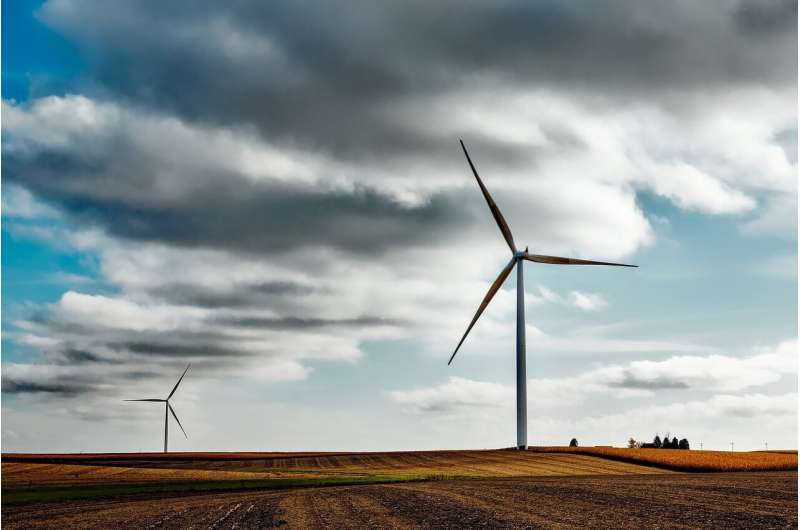Reducing windpower's bad vibes

Windpower has come to the fore as a major source of renewable energy, with "turbine farms" springing up across the land and across the oceans. Of course, any new technology has its problems and its detractors, but technological problems might be addressed in a way that other concerns might not. Writing in the International Journal of Sustainable Materials and Structural Systems, engineers from Trinity College Dublin, Ireland, discuss one of those technological challenges—vibration control.
Breiffni Fitzgerald and Biswajit Basu explain that demand for windpower and so turbines is soaring. But, any new installation must also have efficiency and longevity so that the payback in terms of manufacturing, installation materials and energy is short. The problem of vibration can lead to reduced efficiency and premature failure, both of which can counteract the benefits of installing any wind turbine in the first place and extend payback time and increase waste and losses.
The team has reviewed theoretical and experimental work in this area and focused on passive, semi-active, and active control schemes. They also discuss the development of bespoke auxiliary damping systems and the state-of-the-art in turbine control algorithms that can utilize the extant hardware that controls turbine pitch, generator torque, and yaw control. Passive physical dampening can reduce vibration by up to 50 percent in some of the latest systems, the team writes. By contrast, newer active tendons and other hardware have been shown in some instances to reduce vibration by up to 65 percent.
They point out that those parts of the industry surveyed in their literature review have not been quick to adopt more active and algorithmically controlled vibration control. If adopted soon, such technology might boost those vibration control percentages still further leading to more efficient turbines that have a longer lifespan in the future.
More information: Breiffni Fitzgerald et al. Vibration control of wind turbines: recent advances and emerging trends, International Journal of Sustainable Materials and Structural Systems (2020). DOI: 10.1504/IJSMSS.2020.109090



















